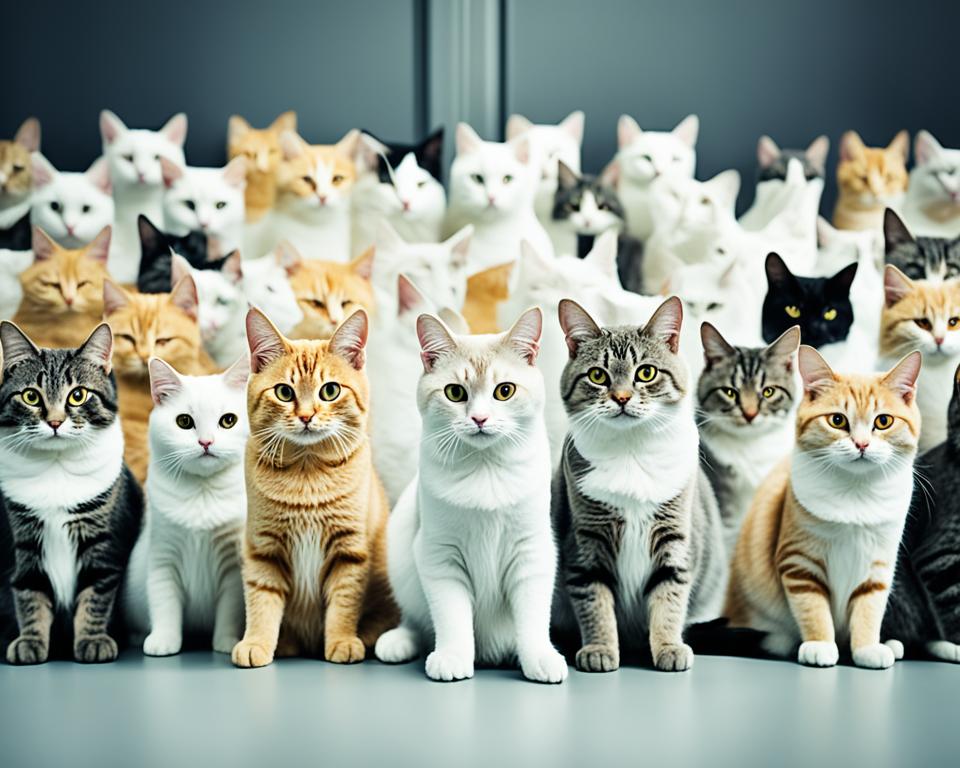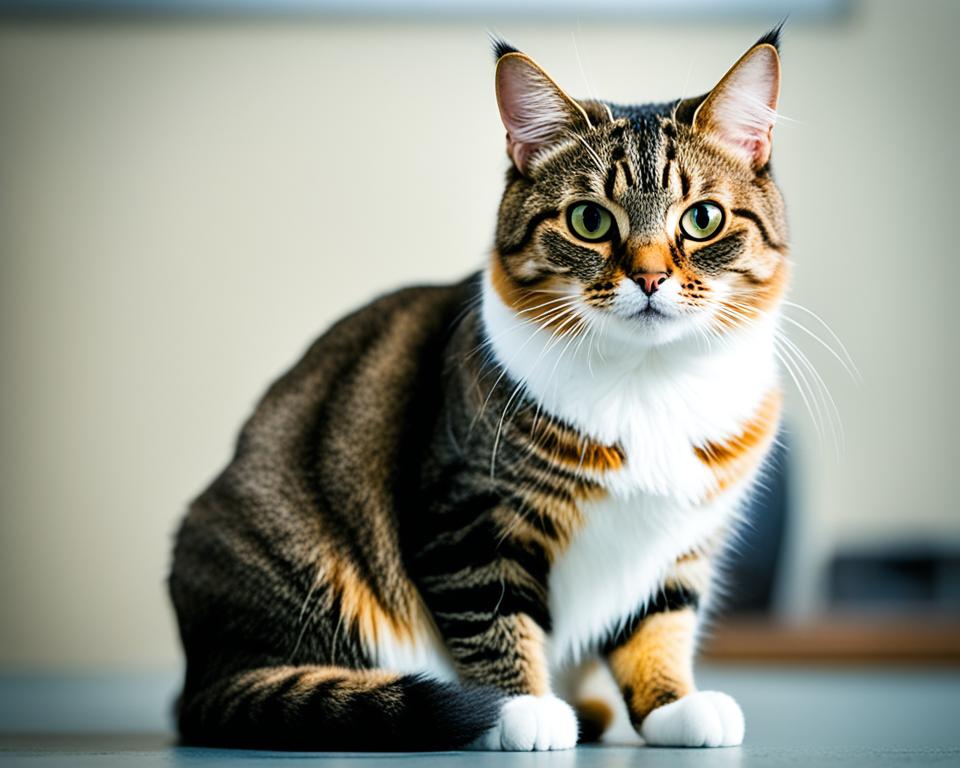Understanding how to communicate with a nonverbal autistic child is a challenge many parents, caregivers,…

Signs of Autism in Cats: Recognize the Symptoms
In the world of pet parenting, a rising query is circling around the signs of autism in cats and whether our feline friends could possess characteristics of this condition. Cat lovers are attempting to demystify feline autism symptoms, observing their pets for tell-tale signs such as idiosyncratic behaviors and sensitivities. While it’s tempting to correlate certain actions of our pets to human conditions, it’s imperative to tread this path with a well-informed mindset.
Understanding autism in feline companions is not about labeling but rather recognizing the unique traits our pets may exhibit. Whether it’s fixating on a fluttering curtain for hours or yowling at seemingly random times, cats can indeed display a spectrum of behaviors that puzzle and worry their owners. These actions, while they may echo the issues seen in humans, are distinct in the animal world and may not necessarily signify a medical condition parallel to autism as understood in people.
Therefore, while you might be curious about the repetitive pacing or strange vocal tirades, the best course to understanding and assisting your furry companion lies in seeking expert insights. A professional from the world of veterinary sciences can offer clarity and direction as you navigate your pet’s behavior, reframing the question from ‘does my cat have autism?’ to ‘how can I support my cat’s unique needs?’ Join us as we explore the fascinating realm of cat behaviors and what they unveil about our beloved pets.
Misconceptions and Clarifications
When discussing autism spectrum disorder in felines, it’s crucial to address several prevalent misunderstandings. While feline behavior can sometimes be puzzling, attributing human psychological conditions to cats can lead to confusion and misinterpretation of their actions and needs.
Addressing the Question: Can Cats Have Autism?
The short answer is no. Cats, as non-human species, do not have autism the same way people do. However, in their complex behaviors and social signaling, cats can demonstrate a range of actions that might superficially resemble those associated with autism spectrum disorder in people. The observation of such behaviors often leads to misconceptions regarding the mental health of our feline friends.
Understanding Feline Behaviors vs. Autism Spectrum Disorder
When cat owners witness their pets exhibiting behaviors such as reduced social interaction or excessive grooming, it’s important to understand that while these might appear similar to signs of cognitive disorder in humans, they often have different causes in cats. Cats may display a degree of feline social communication issues, but this does not mean they suffer from an autism spectrum disorder. Factors such as breed characteristics, sensory sensitivities, and individual personality all play a role in shaping their behavior.
Common Behaviors Mistaken for Feline Autism
Sometimes typical cat actions are mistaken as signs of cognitive disorder in cats. For instance:
- An aloof demeanor or independent streak may be perceived as antisocial behavior.
- Overgrooming, often stress-related, might be seen as compulsive or repetitive behavior.
- A lack of interest in interactive play could be mistaken for disinterest in social engagement.
Rather than jumping to conclusions about a psychological disorder, these signs should prompt a consultation with a veterinarian to explore the wide spectrum of feline health and behavior, armed with accurate information and understanding.
Autistic Behaviors in Cats
When observing feline companions, cat owners and behaviorists have noted a variety of autistic behaviors in cats that provoke both curiosity and concern. To better understand these behaviors, it’s important to examine the instances when cats exhibit traits such as seeming detachment or unusual reactions to routine care. These instances often lead to discussions about potential kitty autism signs, despite the lack of a scientific diagnosis for autism in cats.
- Poor social skills, such as a hesitation to engage with other animals or people
- Less adept problem-solving abilities compared to their feline peers
- Show signs of a lack of empathy by appearing indifferent to the emotions of their human companions
Additionally, some cats show behaviors that are fairly mundane, yet are sometimes viewed through an anthropomorphic lens, giving rise to the idea that cats could share human-like psychiatric conditions.
- Irregular sleeping patterns, such as being active at odd hours of the night
- A distinct preference for simple play objects like strings over complex toys
- Unusual reactions to standard care procedures, such as grooming or medication administration
It’s important for cat owners to realize that while these behaviors may be curious and sometimes challenging, they do not necessarily equate to a kitty having autism. Cats are complex creatures with their own set of behavioral patterns, many of which remain mysterious to even the most knowledgeable feline enthusiasts.

Recognizing the Signs of Autism in Cats
When it comes to understanding your feline friend, staying attuned to certain behaviors can raise questions about their well-being. While there is no definitive cat autism checklist to diagnose autism in cats as the condition is not recognized scientifically in animals it is worthwhile to be aware of certain patterns that may warrant further Attention from a veterinarian. This is not about labeling your cat with a human condition but rather about ensuring their utmost care and comfort.
Irregular Social Interactions and Avoidance
Some cats may display peculiar social habits, including avoidance of eye contact or disinterest in interacting with humans or other animals. This detachment can be misconstrued as a sign of autism in humans. However, it is important to note that each cat has its individual personality, and what might seem like social avoidance could simply be a trait of their character.
Heightened Sensitivity to Sensory Stimuli
Cats are known for their acute sensory perceptions, which can sometimes lead to heightened reactions to stimuli in their surroundings. If your cat is showing signs of distress when exposed to loud noises, bright lights, or particular textures, this could mirror the sensory processing challenges faced by humans with autism. Observing your cat’s reactions could be crucial in diagnosing underlying issues and seeking the necessary veterinary advice.
Spotting Repetitive and Compulsive Behaviors
Repetitive behavior is another aspect owners might observe. If your cat seems fixated on grooming themselves to an excessive degree or chases their tail obsessively, these could be symptoms that signify stress or anxiety. While these behaviors can lead to an assumption of feline autism, they might also be indicative of other medical or environmental factors.
Adaptation Challenges: Dealing with Environmental Changes
A cat’s ability to cope with environmental changes is yet another important behavioral cue. Should your pet struggle with new arrangements in the house or modifications to their routine, the distress they manifest could be compared to the challenges faced by individuals on the autism spectrum adapting to change. Recognizing and understanding your cat’s capacity for adjustment can provide valuable insights for their care regime.
Although we use terms like diagnosing autism in cats, it’s critical to grasp that any such signs are observations rather than clinical diagnoses. A deeper look into these behaviors, ideally with expert input from your vet, can lead to a better understanding and enhancement of your cat’s quality of life.
FAQs
Can cats actually be diagnosed with autism?
Currently, there is no scientific evidence to support a diagnosis of autism in cats as the condition is understood in humans. Cats may exhibit certain behaviors that could be perceived as autistic, but these are better assessed by veterinary professionals for accurate diagnosis and treatment.
What behaviors in cats are sometimes mistaken for signs of autism?
Behaviors such as avoiding eye contact, resisting physical touch, repeating actions like grooming or tail-chasing, and difficulty adapting to environmental changes can sometimes be mistaken for signs of autism in cats.
How do cats with supposed autistic-like behaviors usually react to sensory stimuli?
Cats perceived to have autistic-like behaviors might show heightened sensitivity to sensory stimuli. This can include adverse reactions to loud noises, sudden movements, or changes in their environment, which can lead to visible distress.
Should I be worried if my cat displays behaviors reminiscent of autism?
While some behaviors may seem unusual, they often do not warrant immediate concern. However, it’s important to monitor your cat and consult a veterinarian if you notice persistent issues or significant changes in behavior, ensuring proper care and support for your cat’s needs.
Are repetitive and compulsive behaviors in cats a sign of autism?
Repetitive and compulsive behaviors in cats, such as excessive grooming or tail chasing, are not definitive signs of autism. These behaviors can have various underlying causes, like stress or medical issues, and should be evaluated by a veterinarian.
How can I help my cat if it has difficulty with social interactions or environmental changes?
Provide a stable and safe environment, gradually introduce new stimuli, and consider seeking advice from a veterinarian or a cat behaviorist to develop strategies that can help your cat cope better with social interactions and adapt to changes.



This Post Has 0 Comments